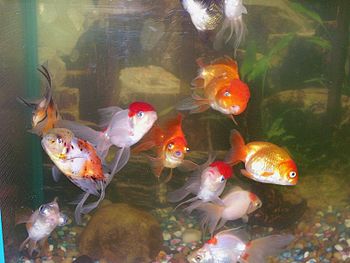 |
| Photo by Daniella Vereeken |
In accordance, Betta Fish Care Guide reports, Those of you who know me understand that We have 3 Bettas and have nearly 24/7 with them. They are users of my household, my kids in a funny kind of way. They challenge me, they make me laugh and there have been periods when they have been the explanation of amazing distress in my life. These are the days we are planning to speak about here. These are the periods we want to listen to.
Betta Fish Care Guide Points
In Betta Fish Care Guide , there is a great deal to growing a Betta, and raising a Betta is exactly what you do. In the event you go to the Local Fish Retail outlet or go online or exactly where you get your Betta, you are taking a fish (especially the males) that have been raised a few fish are. There are good reasons a Betta will not react to attractive much any other fish in your fish tank to the other fish in your tank. He has never been around other fish since he was a fry. Soon following it was motivated that he was a male he was deleted from the tank and placed in someone jar or some other short container so he would not struggle to the death with others of his kind. He easily doesn't understand that there are other fish who are Permitted to be in with him. Well, We have been not going to go into the whole Betta psychology now.
, there is a great deal to growing a Betta, and raising a Betta is exactly what you do. In the event you go to the Local Fish Retail outlet or go online or exactly where you get your Betta, you are taking a fish (especially the males) that have been raised a few fish are. There are good reasons a Betta will not react to attractive much any other fish in your fish tank to the other fish in your tank. He has never been around other fish since he was a fry. Soon following it was motivated that he was a male he was deleted from the tank and placed in someone jar or some other short container so he would not struggle to the death with others of his kind. He easily doesn't understand that there are other fish who are Permitted to be in with him. Well, We have been not going to go into the whole Betta psychology now.
Betta Fish Care Guide about Types
For more Betta Fish Care Guide, Contrary to famous opinion a Betta cannot live in a BETTA BOWL or such comparable sized tank. We would say the minimum for a, in fact, glad Betta is 5 gallons. The Betta bowls or cute little containers they have to appear up with now are impossible to heat or filter and we can come to that momentarily, but Bettas are Tropical Fish and as this kind of, desire to be kept in heated and filtered water. Being Tropical Fish, Bettas should be saved at a temperature of 78 degrees F (25 degrees C) at a Lowest on a consistent basis. It would be much the more to aim for 80 degrees F (26 degrees C) to make them even happier.
It is vital as the Betta seems to be especially prone to some of the cold water situations such as Ich and Finrot. These diseases are essentially prevented by conserving the tank temperature at steady and acceptable ranges. and water parameters fantastic. Here again, because the Betta is a Tropical Fish and especially because you love your fish and do not want to field him to have to live in a sewer, you need a GOOD filter in the tank you will be housing him in. This options chemical, biological, and mechanical filtration - no undergravel filters (UGF). You will discover many varieties of filters out there but not all of them are ideal for a Betta. Bettas are not given to being in a strong current so you desire to discover a monitor that is adjustable to the levels that it supplies a ripple or brief waterfall - not a torrent. They do like some movement to the major surface of the water as they are one of the Labyrinth fishes. These fish have an organ on the major of their heads that not only allow them to breathe air like we do, but demands it.
So if dust, scum or everything else builds upon the surface of the water and the Betta is prevented from reaching a clean floor spot, he will drown. He also uses his gills so he can vacation underwater for a time, but if you watch your Betta he'll go to the surface and "butt" the surface with the top of his brain, this is his "breathing air". A lot of proprietors supply a tall plant for their Betta to sleep in at night so they won't have to swim so far to "breathe".
|






